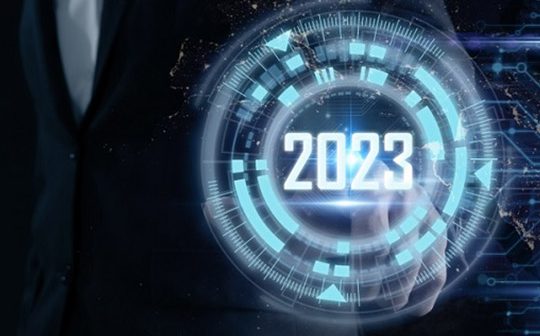
Written by Stephane Marouani, Country Manager ANZ at MathWorks.
The progression of AI from futuristic curiosity to critical enterprise tools is a testament to its value for engineers. Gartner recently predicted that enterprises that adopt AI engineering practices to build and manage adaptive AI systems would outperform their peers in operationalising AI models by at least 25%, which adds external pressure for organisations to continue pushing their adoption of AI. 2023 is positioned to be an important year for AI as engineers continue to discover new use cases that deliver value across their organisations.
Here are four major AI trends engineers can expect to adopt or plan around in 2023.
1. Teaching Machines about the Real World: Physics-Informed AI
In addition to data-centric AI approaches, model-centric AI approaches are also gaining traction. Most data-centric AI models are trying to optimise to the highest accuracy based on the data received, allowing models to make any conclusions without regard to real-world rules and principles. As AI continues to expand into more and more research areas, such as complex engineered systems, models need to consider physical constraints to be relevant worldwide. For example, a lead researcher at MIT uses Physics-Informed AI to design novel biomedical devices, improving the detection of mild traumatic brain injuries.
Similarly, Reduced Order Modeling (ROM) using physics-based reduction models is a new trend gaining traction and providing a lower computational barrier of entry to high-fidelity models that are too computationally intensive to be used for system-level design. Using AI can speed up simulations by replacing a first-principles model of a system, all while preserving the expected fidelity of the system. In the case of ROM and other physics-informed applications, AI will improve the model’s ability to converge on a solution and provide increased interpretability based on rules-based algorithms.
At the heart of physics-informed AI is the need for simulation: These complex models can be configured as variants within a simulation, enabling the engineer to quickly switch between models to approach the best and most accurate solution.
2. Demand for collaboration across AI: Open access to AI will continue to expand
A growing trend is for researchers, engineers, and data scientists to leverage the work of each other in the name of innovation. We see the need for more collaboration based on a few trends in engineers’ workflows and responsibilities.
The primary trend driving cross-collaboration is that research is increasingly being done in AI, which creates more urgency for the latest models to be available on demand. GitHub is the location of choice for the latest research models to be readily available. It’s not uncommon for a new model to be introduced on GitHub and a few hours later have an entirely new solution built on that example. A high quantity of high-quality models allows all practitioners to build on the latest research in less time than ever before.
The second trend is a growing reliance on Open-Source solutions. Models may come from several different frameworks, so engineering teams will want solutions that bridge the gap between their preferred system of choice and the end solution. Enter interoperability between frameworks, allowing AI to be incorporated into more diverse fields of study.
Finally, companies are increasingly working with academia to take advantage of the accelerating pace of research focused on AI for their specific application. For example, academic collaboration on AI can help businesses tackle new challenges, taking advantage of research within academia on topics such as physics-informed machine learning and biomedical image processing.
3. Companies will focus on smaller, more explainable AI models
When engineers and scientists first explore models, accuracy is the primary motivating factor, and other model tradeoffs may not be a focus. However, AI practitioners are learning that for models to be relevant, they must be deployed, fit onto hardware, and understand the models’ easily explainable decisions.
A rising trend is using traditional machine learning models to meet the requirements of low-cost, low-power devices with explainable output. Parametric models are also an example of “old is new again,” as we see a growing number of companies wanting guaranteed results fitting specific formulas and parameters. Traditional machine learning techniques aren’t cutting-edge, but they get the job done in an understandable and repeatable manner. These models are inherently compact, which fits the need of the hardware requirements with a low memory footprint, and can provide stakeholders with confidence that a model will meet the expectations of the application through ease of interpreting the output.
If newer, more memory-intensive models are required, techniques for quantisation and pruning offer ways to compress models, which can reduce model size with minimal effects on accuracy. Explainability methods are also being used on more complex models to explain the decisions of a model to increase the confidence of the output.
With interpretability, quantisation, and pruning, engineers and scientists are given even more options to expand AI – including both Deep Learning and traditional machine learning models – into mainstream model development.
4. AI becomes essential in the design, development, and operation of state-of-the-art engineered systems
It is unlikely that a breakthrough engineering innovation doesn’t contain AI. AI will continue to impact established fields, including those working with time-series and sensor data. As AI pushes toward the mainstream in all industries and applications, complex engineering systems that don’t contain AI become outliers.
The growing trend of Electrification is an example of AI opening doors to even more applications like battery management, virtual sensing, and reduced-order modeling. However, engineers working in more established fields that have recently incorporated AI may need a background in the technology. This creates demand for specific reference examples that engineers can use to identify how to incorporate AI into their work with minimal disruption. For example, engineers working on battery management systems will want to begin with a proven example that engineers can then include their data and expertise to work for their specific situation.
The question is no longer if AI will impact businesses but rather when this will happen and what this will look like for individual organisations. Continued AI adoption has implications across an organisation – from cross-disciplinary collaboration to unique component design – so it’s critical for engineers to identify the use cases that align with their short- and long-term goals and implement them accordingly.





